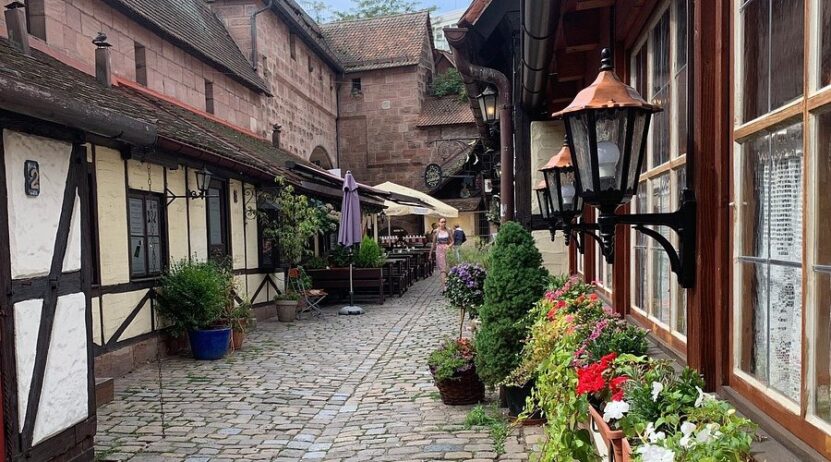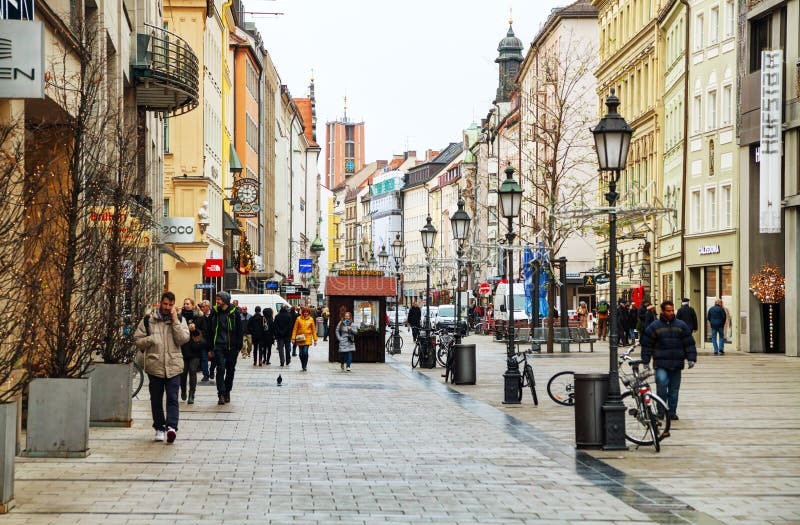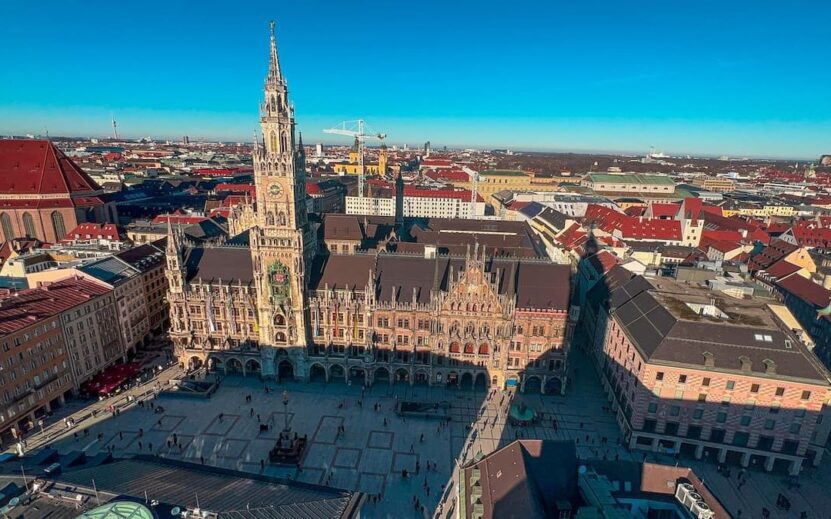Munich’s Old Town is a place where history seems to whisper through cobblestone streets and ornate façades.
While most visitors are drawn to landmarks like Marienplatz or Viktualienmarkt, there’s another layer of the city often overlooked: its secret courtyards.
Tucked behind heavy wooden doors and narrow passageways, these hidden spaces reveal tranquil gardens, centuries-old arcades, and quiet corners where locals still pause to enjoy a moment away from the bustle.
Exploring them gives travelers a deeper sense of Munich’s character – equal parts medieval charm and contemporary elegance.
Key Points
- Secret courtyards in Munich Old Town offer peaceful retreats behind the city’s busiest streets.
- Many are tied to historic residences, monasteries, or trading houses.
- Courtyards often feature arcades, fountains, and hidden art details.
- Access can vary: some are public, others semi-private but open during the day.
- Exploring them gives travelers a more authentic sense of daily Munich life.
Courtyards for Wandering and Companionship
Munich’s courtyards are more than just architectural side notes. They reflect the way the city evolved over centuries, blending residential life with commerce and spirituality.
Merchants once used these spaces for storing goods and hosting clients, while monasteries built cloistered gardens to cultivate herbs and maintain quiet reflection.
Part of the joy in discovering these spaces is how spontaneous it feels. You might turn down an alley behind Sendlinger Straße and suddenly find yourself in a baroque courtyard decorated with statues. Or you may stumble into a quiet arcade near Odeonsplatz that feels worlds away from the busy square outside.
For travelers who want to make their Munich visit even more memorable, experiences in these courtyards can be enjoyed with good company.
Exploring them with friends, a partner, or even a guide can bring a new perspective. Some visitors also prefer the privacy of tailored companionship during their stay.
Services such as München escort are sometimes chosen by guests who want a discreet companion for a walk through the courtyards, a fine dinner, or cultural events.
This pairing of hidden city corners makes for a unique way to experience Munich beyond the standard tourist path.
The Courtyards Around Marienplatz

Marienplatz is Munich’s beating heart, and yet only steps away are quiet retreats hidden behind the façades of historic buildings.
The Old and New Town Halls both conceal arcades and inner courtyards that most visitors walk past without noticing.
These spaces are accessible, often with open gates, and allow travelers to see architectural details—such as gothic arches or renaissance reliefs—that aren’t visible from the main square.
Another highlight is the courtyards behind the Frauenkirche. The massive cathedral dominates the skyline, but its back entrances lead to tranquil spaces where ivy-covered walls provide shade and benches offer a place to rest.
Sitting here, you can almost imagine the lives of Munich’s medieval townspeople who once relied on these hidden corners for peace.
Cloisters and Monastic Gardens
Religious orders left their mark on Munich not only with churches but also with serene inner gardens. Near Odeonsplatz, the Theatinerkirche connects to a former cloister where archways line a hushed square.
Likewise, the Alter Hof—the Old Court once home to the Wittelsbach dynasty—contains several inner courtyards with stone staircases and small chapels that speak to centuries of devotion and governance.
Monastic courtyards tend to be more symmetrical, often centered around a fountain or garden. For travelers, they provide a lesson in balance: even in the middle of a bustling city, there has always been room carved out for stillness and reflection.
Artisan Yards and Trading Houses

Munich’s position as a trade hub in the Middle Ages is still evident in its architecture. Several guild houses and former merchant residences contain courtyards that once served as bustling workyards. These spaces often feature arcades designed for storing and displaying goods, and today they host boutique shops, small cafés, or artisan studios.
A perfect example is the Hofstatt area, where sleek modern shops blend with restored courtyards that still hint at their merchant past. Walking through here feels like threading through layers of time—past, present, and future all sharing the same walls.
Modern Courtyards Blending Past and Present
Not all courtyards are relics of the past. Some have been reimagined as urban oases, blending modern design with historical structures.
For example, near Viktualienmarkt, renovated courtyards now feature minimalist cafés where locals gather for coffee while surrounded by centuries-old masonry.
This mix of old and new is part of Munich’s charm. The city respects its history but is not afraid to reinvent.
Courtyards that once stored goods are now home to exhibitions, creative hubs, or chic restaurants. Travelers who take the time to enter these spaces get to see a living city that continuously adapts while still holding onto its roots.
How to Find and Enjoy Them

While some courtyards are well known, others remain hidden unless you actively look. A few tips can help:
- Look for open gates: Many residential or commercial courtyards keep doors unlocked during daytime hours.
- Explore side alleys: Streets like Sendlinger Straße, Kaufingerstraße, and Residenzstraße are full of discreet passageways.
- Join a walking tour: Some local guides specialize in showing hidden courtyards, offering context and history.
- Take your time: These spaces are best enjoyed slowly, sitting down with a coffee or quietly observing the details.
Why They Are Worth Your Time
Exploring Munich’s secret courtyards is not about ticking off another landmark. It’s about experiencing the quieter side of the city, the parts where history lingers without fanfare.
For many visitors, these courtyards become the memories that last longer than the crowded main squares or museums: a sudden stillness, a hidden fountain, or a conversation shared in a tucked-away corner.
They are also a reminder that cities are layered, and the most rewarding experiences often come when you step off the obvious path.
Munich’s courtyards are there for those curious enough to pause, push open a gate, and step inside.
Conclusion
Munich Old Town holds more than just famous landmarks. Its hidden courtyards reveal the city’s rhythm of life—where history, spirituality, commerce, and creativity intersect quietly behind façades.
For travelers seeking authenticity, these spaces are a chance to see a softer side of the Bavarian capital. Whether you wander alone, with a guide, or in chosen company, the courtyards of Munich reward curiosity with beauty and calm.

